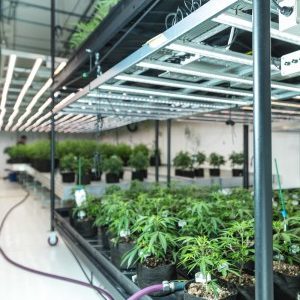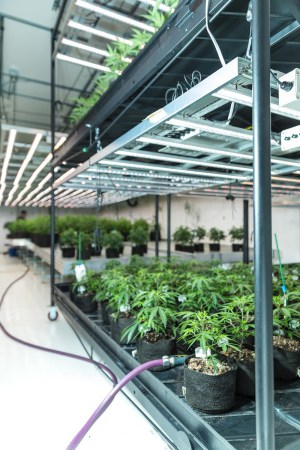Member Blog: Doing More With Less – Ways To Expand Yields, Save Money, And Keep Quality
Marijuana Laws, Regulations, & PoliticsUncategorized April 10, 2019 MJ Shareholders 0

By Andrew Myers, President & CEO of ProGrowTech
As the cannabis industry continues to expand, commercial growers are looking for new and cost-effective ways to get a competitive edge in an increasingly crowded market.
The persistent and ever-growing demand for cannabis products has industry professionals wondering how they can increase their production levels and maintain quality while remaining profitable. Simultaneously, the price of cannabis continues to drop yet operational costs facing growers remain the same — this combination undoubtedly limits the ability to make much-needed investments or updates to their facilities. While the answer may be different for each grower, evaluating a few key areas may lead to increased production without the skyrocketing expenses.
What are some of the best ways to cut down on costs without inhibiting quality? Start by asking the right questions.
Which Lights Provide the Right Intensity, Spectrum, and Efficiency for Your Grow?
It can’t be emphasized enough that lighting plays an integral role in the success of any harvest. When growing indoors, agriculturalists lose exactly what plants need to survive: the sun. LED lights that produce the appropriate light spectrum and intensity can be a (sometimes superior) replacement for the sun.
When used effectively, LEDs can mimic the changing of the seasons — thereby allowing horticulturalists to hasten flowering or encourage dormancy. They’re able to change the appearance, potency and size of the plant. Spectral tuning gives cultivators control over the timing of the plant’s natural life cycle and the resulting harvest, supporting the conclusion that LEDs are the optimal lighting choice for growers seeking higher production levels in a shorter amount of time.
LEDs deliver numerous other time- and money-saving benefits to commercial growers, including:
Energy efficiency – LEDs are an environmentally friendly and sustainable choice for horticulturalists looking to cut down on energy costs — easily surpassing other lighting technologies in this realm.
Cooler running temperature – They runs at a much cooler temperatures than most other options. This means that, even with several LED fixtures delivering bright, intense light, horticulturalists don’t have to worry about burning their plants.
Durability – Lights need to survive a high-demand, busy and ever-changing commercial grow environment. Some lights include especially durable features, such as tempered glass LED chip covers and industrial-grade aluminum — they’ll last for years while also giving growers peace-of-mind.
What Can Be Vertically Accomplished?
 Vertical farming has revolutionized the way we think about indoor agriculture. With the advancement of vertical racking, growers can amplify their harvests — sometimes multiplying their crops ten-fold — without having to invest in more square footage.
Vertical farming has revolutionized the way we think about indoor agriculture. With the advancement of vertical racking, growers can amplify their harvests — sometimes multiplying their crops ten-fold — without having to invest in more square footage.
While this layout certainly isn’t a new idea in agriculture, it was more recently adopted by cannabis growers as some LED grow lights are now capable of being vertically racked. Many growers’ facilities have square footage limitations, whether due to budget or state law; building up, rather than out, offers the opportunity to drastically expand growing capabilities even in smaller spaces.
To keep your vertical cannabis garden in excellent condition:
- Ensure your LED lighting fixture delivers uniform light intensity, so each plant gets the light it needs at every stage of growth to flourish.
- Assess whether spectral tuning is appropriate. Some growers might opt for more adjustability so they have the greatest level of control when custom crafting their crop.
- Make sure you have proper ventilation. This equalizes the environment of each tier and prevents the development of microclimates or condensation — which can lead to disease or rot.
- Install moveable benches to easily rearrange and access each tier as needed.
This combination of technology and intelligent design expands the realm of possibility for cannabis cultivators who want to use their space more efficiently.
Which Cutting-Edge Growing Techniques Make a Difference?
It’s also important to explore what the individual cultivator can do to improve harvests and offset costs. After all, they’re the ones who handle the plants on a day-to-day basis, and best understand what they need to prosper. Their approach plays a central role in crop health.
Commercial cultivators are able to implement advanced growing strategies to produce healthier and more profitable plants:
Tissue culture cultivation – This innovative technique is relatively new to the cannabis industry, although it has been used since the 1950s to aid in orchid reproduction. The process involves immersing cuttings from a healthy, mature plant in different hormone solutions. Tissue culture cultivation allows growers to quickly develop several — up to hundreds — of genetically identical plants.
Consolidate veg and bloom rooms – Adjustable LEDs offer an easy solution for growers who want to use the time-saving “flower-in-place” approach.LEDs start by delivering gentle springtime light, and growers gradually ramp up the intensity to replicate the height of summer. This method prevents plants from being shocked when they’re moved from room to room, encouraging resiliency — and reducing the required square footage to get a healthy harvest.
The Bottom Line
Critics of indoor agriculture argue it’s too expensive. And in some cases, skeptics have a point — when approached incorrectly, indoor cultivators are indeed faced with expensive operational costs that may slash their profits.
But this doesn’t always have to be the case. Advancements in technology and design, catalyzed by the creative minds leading the industry, are making indoor agriculture more realistic than ever — for any type of grower. Furthermore, indoor agriculture gives the individual grower ultimate control over the environment. One day, variables like unpredictable weather or changing seasons can be left behind. Traditional industrial agriculture results in soil degradation and pollution — moving indoors can help mitigate this negative impact on our environment. In addition, cultivators no longer have to use harmful pesticides, resulting in a healthier product for both the earth and the eventual consumer.
 Andrew Myers is President and CEO of ProGrowTech, which helps commercial horticulture operations increase profitability, yield and energy efficiency with industry-leading LED lighting systems. For more information, visit progrowtech.com.
Andrew Myers is President and CEO of ProGrowTech, which helps commercial horticulture operations increase profitability, yield and energy efficiency with industry-leading LED lighting systems. For more information, visit progrowtech.com.
MJ Shareholders
MJShareholders.com is the largest dedicated financial network and leading corporate communications firm serving the legal cannabis industry. Our network aims to connect public marijuana companies with these focused cannabis audiences across the US and Canada that are critical for growth: Short and long term cannabis investors Active funding sources Mainstream media Business leaders Cannabis consumers










No comments so far.
Be first to leave comment below.